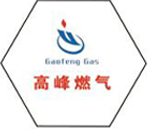
7 月 . 25, 2024 12:57
Back to list
Natural Gas Pressure Reduction Station and Its Importance in Energy Distribution Systems
Natural Gas Pressure Reduction Stations An Overview
Natural gas is a critical component of the global energy landscape, serving as a clean and efficient source of energy for various applications, including residential heating, electricity generation, and industrial processes. However, to ensure safe and efficient delivery of this energy source, it is essential to maintain appropriate pressure levels throughout the pipeline network. This is where natural gas pressure reduction stations come into play.
A natural gas pressure reduction station (PRDS) is a facility that manages the pressure of natural gas being transported through pipelines. These stations are strategically located along the transmission and distribution networks to ensure that natural gas is delivered at safe and usable pressure levels for consumers. High-pressure gas from transmission pipelines is typically reduced to lower pressure levels suitable for distribution within urban areas or for industrial use.
Structure and Components
A typical pressure reduction station consists of various components, including pressure regulators, filtering systems, metering devices, and safety equipment. The pressure regulators are the heart of the system, managing the reduction of gas pressure by adjusting the flow and minimizing fluctuations. This ensures a consistent supply of natural gas at the required pressure without risking damage to pipelines or end-user equipment.
Filters are essential for removing impurities and particulates from the gas before it enters the distribution system. These contaminants can cause wear and tear on equipment, potentially leading to dangerous situations. Furthermore, metering devices are crucial as they accurately measure the amount of gas being delivered, allowing for effective billing and monitoring of usage.
.
Operational Processes
محطة تخفيض ضغط الغاز الطبيعي

The operation of a pressure reduction station involves several crucial steps. Initially, high-pressure gas enters the station from transmission lines. It then passes through filtering systems to remove any impurities. The gas is then directed to pressure regulators, which significantly decrease its pressure to safer levels for further distribution.
Once the gas has been adequately reduced in pressure, it is metered to ensure accurate measurement before being sent out into the distribution network. Depending on regional demand, the station may also have the capability to adjust gas flow rates, providing flexibility to meet varying consumer needs.
Environmental Considerations
As natural gas is a cleaner fossil fuel compared to coal and oil, pressure reduction stations play a vital role in supporting a transition towards more sustainable energy practices. By ensuring the effective and safe distribution of natural gas, these stations contribute to a reduction in greenhouse gas emissions, especially when used in place of more polluting energy sources.
Furthermore, the integration of renewable energy sources into natural gas systems, such as biogas or hydrogen blending, is becoming increasingly popular. Pressure reduction stations may need to adapt to these changes, ensuring they maintain safety and efficiency while embracing innovations in the energy sector.
Conclusion
Natural gas pressure reduction stations are an essential component of the natural gas supply chain. They ensure that gas is delivered safely and efficiently to end-users, supporting residential, commercial, and industrial applications. With a focus on safety and environmental responsibility, these stations will continue to evolve, playing a vital role in the future of energy distribution and management. As the world transitions towards more sustainable energy practices, PRDS will be instrumental in facilitating this shift, ensuring safe access to one of our most crucial energy resources.
Latest news
-
Unlocking The Quality Gas Pressure ReducersNewsNov.01,2024
-
The Role of Gas Pressure Reducing StationsNewsNov.01,2024
-
The Importance and Functionality of Safety Relief ValvesNewsNov.01,2024
-
The Essential Role of Safety Valves in Natural Gas ApplicationsNewsNov.01,2024
-
The Essential Role of Gas Pressure RegulatorsNewsNov.01,2024
-
Enhance Your Premium Gas FiltersNewsNov.01,2024

